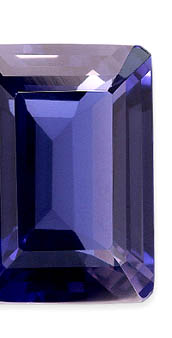
Iolite
Jewellery designers have long searched for an affordable gem to complement the rich blues so prevalent in fashion, from denim to velvet. They found it in Iolite, an unusual gem that offers rich blue colour that won’t break the bank.
Named from the Greek ios, or violet, Iolite at its best is a rich violet blue that might remind you of better-known gems like tanzanite and sapphire. Although it is still not well known, Iolite has a long history.
When Leif Eriksson and the other legendary Viking explorers ventured far into the Atlantic, away from any coastline that could help them determine position, they relied on Iolite to help them determine their location. They used thin pieces of Iolite as the world’s first polarising filter. Looking through an Iolite lens, they could determine the exact position of the sun, and navigate safely to the New World and back.
The property that made Iolite so valuable to the Vikings is extreme pleochroism. Iolite has different colours in different directions in the crystal. A cube cut from Iolite will look a violetish blue almost like sapphire from one side, clear as water from the other and a honey yellow from the top. This property led some people to call Iolite “water sapphire” in the past, a name that is now obsolete.
Pleochroism may have been helpful in navigation but it makes things difficult for a gem cutter. If Iolite is not cut from exactly the right direction, no matter the shape of the rough, its colour will not show to its best advantage.
Iolite is usually a purplish blue when cut properly, with a softness to the colour that can be quite attractive. It is more common to find Iolite with beautiful blue in small sizes: larger sizes are often too dark, almost black. Iolite is readily available and surprisingly affordable in sizes up to 4 or 5 carats. The better and richer the blue, the higher the price. Colours that are gray, purple, or less saturated blue are less.
Iolite is mined in India, Sri Lanka, Mozambique, Zimbabwe, and Brazil. The Vikings probably mined Iolite from deposits in Norway and Greenland. The most common shape is oval.
Iolite is relatively hard, with a Mohs Hardness of 7 to 7.5, but should be protected from blows. Clean with mild dish soap: use a toothbrush to scrub behind the stone where dust can collect.

